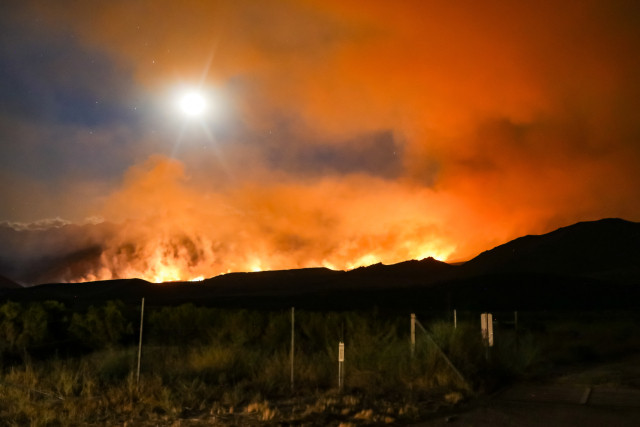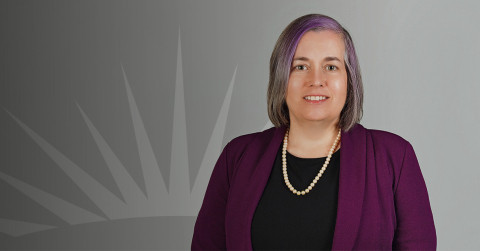
Wildfires: A Rising Risk
Wildfires in the western United States have caused unprecedented losses for the American insurance industry in recent years. The inflation-adjusted amount paid by the insurance industry for wildfire losses increased from $100 million in 1964 to $4 billion per year in 2018. This was mainly due to the 2017 Tubbs and the 2018 Camp fires, which caused a total of $12 billion and $9 billion in insurance claims respectively. The costs of these fires have, in part, spurred consensus of the need for wildfire risk mitigation in at-risk areas.
The increase in insurance claims and claim severity has forced an increase in premiums. At the same time, insurance companies are increasing underwriting restrictions on policies to limit losses, leading to an increase in the utilization of the California Fair Access to Insurance Requirement (CA FAIR) plan. In addition, the withdrawal of insurance companies doing business in California worsens the situation for this catastrophic risk. Several actions have been taken by regulators and insurers alike to tackle the spike of growing wildfire risk.
Industry Reaction
When looking at wildfires through an insurer’s lens, it is critical to understand the relationship between premium credit and mitigation efforts. In short, historically there has not been much premium credit given towards wildfire mitigation strategies.
This begs the question: “How can insurers model and develop appropriate wildfire mitigation credits?”
Utilizing stochastic processes, the insurance industry can produce models that exhibit the effect of wildfire mitigation on expected losses. Two models that perform this action and are widely used among insurers are the CoreLogic model and Moody’s RMS Wildfire. These models utilize variables such as land cover and fuel, property characteristics and defensible space to assess the mitigation impact on expected wildfire losses.
- Land cover and fuel. It is commonly believed that wildfire risk is driven by two things – ignition and the likelihood of that ignition spreading to adjacent areas. The models feed various classifications of land cover and fuel that are obtained with satellite imagery to quantify this variable.
- Property characteristics. The models utilize whether the property has fire-resistive applications, such as roofs, vents and windows. This adds to the complexity of the model and, in a more detailed fashion, models mitigation efforts to that of expected losses.
- Clearance and defensible space. Finally, the models utilize criteria from three zones that surround a property. These three zones, numbering zero, one and two, each have different criteria that must be met for the model to accept a binary input of “yes” or “no.”
Through the sophistication of these models, actuaries can quantify the effect of mitigation efforts on expected losses and, in turn, calculate premiums related to wildfire-specific risk.
When modeling premium credit, an actuary has many simultaneous considerations. These considerations include actuarial standards of practice, rate adequacy, by-peril rating and expense loading. Each factor plays a critical role in producing adequate, non-excessive or unfairly discriminatory premium estimates for wildfire risk.
Regulator Reaction
With increasing frequency of wildfires and increased insurer actions, regulators and legislators are becoming more active with their responses. In Colorado, a wildfire mitigation fund was created (Colo. Rev. Stat. § 24-33.5-1619). And while some states have seen changes like increased bulletins on wildfire claims handling practices, none have had as many changes as California.
A major piece of California’s wildfire response is its FAIR plan. The FAIR plan is a pool of all insurers who write basic property insurance in the state and share profits, losses and expenses from the FAIR plan in proportion to a company’s market share. The plan acts as the insurer of last resort, issuing policies for those who are unable to obtain insurance through the primary market.
The CA FAIR plan policies are largely Differences in Conditions (DIC) policies that cover the Fire Peril. A DIC policy covers claims that would otherwise be excluded from a policy. In 2019, the California Department of Insurance (CA DOI) issued an order of the FAIR plan to issue policies equivalent to an HO-3 policy form. That would entail including other perils, such as water, liability and theft. The FAIR Plan challenged this order on the basis that the order would increase costs for existing fair plan users. The challenge was resolved with a ruling that current California Insurance Commissioner Ricardo Lara would have to remove liability coverages from his order.
Since the passage of California Senate Bill 824 in 2018, the CA DOI has issued one-year moratoriums on cancelations and non-renewals for residential policies in areas affected by wildfires. In its first year, the moratorium affected more than one million home and rental properties and spanned more than 180 zip codes.
The CA FAIR plan has seen rapid growth. As of December 2021, the FAIR Plan makes up 3% of total residential insurance policies in California (an increase from 1.6% in December 2018). This rapid growth is more pronounced in the riskiest 10 counties, with an increase from 2.2% (2018) to 21.9% (2021).
In October 2022, the CA DOI issued Regulation 2644.9, which mandates rating factors for property-level and community-level mitigation credits. The DOI hopes that this will drive down costs and increase transparency.
Conclusion
While modeling that is used to more precisely assess the level of Severe Convective Storms (SCS) and hurricane risks has been around for decades, there aren’t nearly the same number and depth of effective modeling options available for wildfires due to insufficient and changing data. As a consequence, as it specifically relates to wildfires, the insurance industry has needed to be adaptive and creative when developing rates and setting regulation.
Kris Kresto is an actuarial analyst 2 with Pinnacle Actuarial Resources in the Chicago office. He holds Bachelor of Science degrees in actuarial science and statistics from the University of Illinois at Urbana-Champaign and has experience in assignments involving loss reserving, loss cost projections and group captives. He is actively pursuing membership in the Casualty Actuarial Society (CAS) through the examination process.
Sam Woessner is an actuarial analyst 2 with Pinnacle Actuarial Resources in the Chicago office. He holds a Bachelor of Science degree in actuarial science and economics from the University of Illinois at Urbana-Champaign and has experience in assignments involving personal lines pricing, advanced claims analytics, loss reserving, loss cost projections and group captives. He is actively pursuing membership in the CAS through the examination process.
Shannon Ooi is a recent graduate from the University of Illinois at Urbana-Champaign, with a Bachelor of Science in actuarial science and statistics in 2023 and presented "Wildfires – A Rising Risk" at the 2023 Pinnacle University in March 2023.



